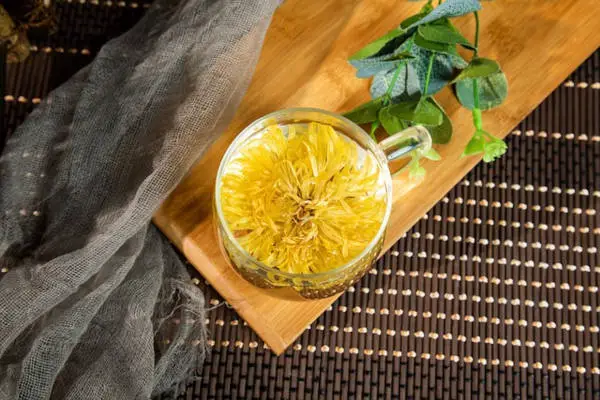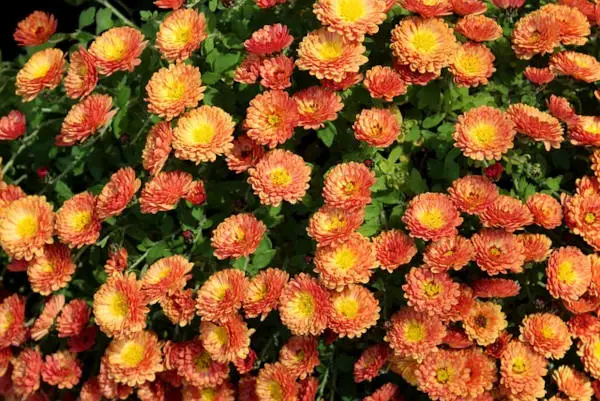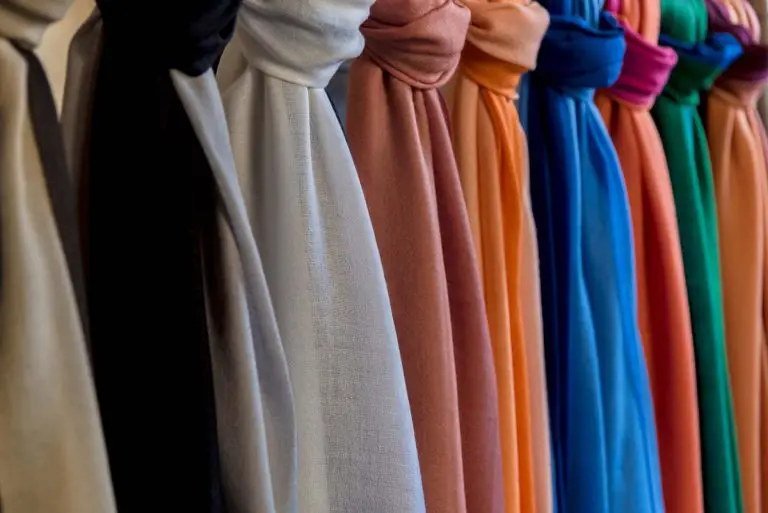In Chinese culture, the chrysanthemum (菊花 Jú huā) is a distinctive symbol. Since ancient times, Chinese experts have considered chrysanthemum, bamboo, orchid, and plum blossom as the “Four Noble Plants in Chinese Culture.”
Chrysanthemums (also known as “Golden Flowers”) are a popular flower in China and are associated with autumn and the ninth lunar month. The remaining three seasons are represented by plum blossom (winter), orchid (spring), and bamboo (summer).
The chrysanthemum flower (菊花) is pronounced Ju Hua. Ju sounds close to Jiu (九), which indicates nine. As a result, it is no surprise that chrysanthemums picked on the ninth day of the ninth month are always of the highest quality.
During the cool fall months, when most flowers wither, the chrysanthemums bloom in vibrant colors. In the face of cold and a harsh environment, it grows magnificently without having to compete with other flowers; this distinguishing feature of the chrysanthemum makes it a symbol of strong vitality and persistence in the eyes of scholars.
This feature of the chrysanthemum inspired intellectuals and poets from several dynasties to create literary works. In addition to appreciating its beauty, they turned the chrysanthemum into a symbol that shows who they are through their work.
Chrysanthemums are also a popular choice for decorations at large events such as fall festivals and gatherings. It is a popular flower in China and is frequently depicted in paintings. It represents happiness and the desire for a tranquil retirement.
There are many different kinds of chrysanthemums that come in a wide range of colors and shapes. Its significance is demonstrated by the fact that the ninth month of the traditional calendar is known as the “chrysanthemum month.” The petals may be used to produce a calming herbal tea as well as to flavor wine, which is commonly consumed at the Zhong Yang or Double Ninth Festival. The love of chrysanthemums extended to Japan, where the Emperor of Japan holds the chrysanthemum throne.

Chrysanthemum: Origin and History
Chrysanthemums are native to China, where they have been grown for over 3,000 years. They were already grown as flowering herbs as early as 1500–1400 BC, and they were regarded as valuable plants with unique qualities. Only noblemen were permitted to grow them in their gardens.
The decorative chrysanthemum was introduced from China to Japan via Korea during the Tang Dynasty (about the 8th century CE). Around the end of the 17th century, Dutch traders brought Chinese chrysanthemums to Europe. By the middle of the 19th century, they had made it to North America.
In 1689, Jacob Breynius became the first person in Europe to describe grown chrysanthemums as we know them today. Carolus Linnaeus, a physician, and botanist is credited with popularizing the name “chrysanthemum” for this flower. In Greek, “Chrys” means “gold-colored,” which reflects the flower’s natural color, and “anthemion” means “flower,” so the name “golden flower.”
Many ancient philosophers and scholars wrote about how chrysanthemums promote longevity, health, and happiness. They are referenced in Chinese history as early as the 15th century B.C. As a result, they may be seen on the best Chinese porcelain, which is painted in the delicate Asian style. Additionally, they were used as a gift to the gods in Buddhist temples and were usually depicted with lotus blossoms in Buddhist thangka paintings.
In general, the chrysanthemum represents nobility in China. There is even a town in China named after the chrysanthemum. Ju-Xian, also known as Xiaolan Town or Zhongshan City nowadays, literally means “Chrysanthemum Town.” (“Chu” is the flower’s ancient name.)
“I don’t have a particular preference for chrysanthemum, yet there are indeed no better looking flowers after it blooms,” wrote the Tang Dynasty (618-907) poet Yuan Zhen in his poem “Chrysanthemum.”
The chrysanthemum is referred to as the “gentleman of flowers.” As we have seen, they have been farmed for centuries in China and other areas of Asia, and there are several variations and forms, ranging from little button-like blossoms to bigger flowers with long, lanky petals that appear almost otherworldly. They come in a variety of colors, including bright, vibrant colors and warm, autumnal tones. In Asian flower arrangement methods, their round heads, tall stems, and robust leaves are perceived as highly elegant.
The Chinese Ministry of Posts and Telecommunications released a collection of 18 unique stamps featuring “chrysanthemums” on December 10, 1960. This was the first large-scale collection of unique floral stamps issued in Chinese stamp history. Their design was created by several bird-and-flower artisans.
An Introduction to Chinese History & Culture (Aff.link)
Dive into China’s rich past and intriguing present! From ancient dynasties to modern powerhouses, uncover Chinese culture facts, pivotal moments, and the captivating tales that have shaped this vast nation.
Cultural Significance and Meaning
The chrysanthemum appears early in the spring but doesn’t produce buds until the end of the summer, as the other flowers start to fade. It blooms in full bloom against the frigid frost, with a dazzling spectrum of color and low-key elegance. This portrays the quest of ancient Chinese gentlemen, who have a calm mind and are unconcerned about fortune and fame.
Since ancient times, Chinese scholars have regarded the chrysanthemum as the “Hermit of All Flowers.” This is mostly because of the connection to Tao Yuanming (陶渊明, CE 365-327), the most famous of the “recluse poets” and the founder of the so-called “Fields and Gardens” poetry style. He spent most of his life in isolation, living in the countryside, farming, reading, sipping wine, visiting friends on occasion, and penning poetry, in which he often pondered on the joys and sorrows of life, his concern for the welfare of ordinary people, as well as his renunciation of officialdom and return to nature. The natural world’s beauty and peacefulness inspired him to write poems.
A chrysanthemum represents longevity, affluence, and the desire for a relaxed retirement. This is due not only to the fact that chrysanthemum (菊, Jú) sounds similar to both the words 居 Jū, meaning “to reside,” and 久 Jiǔ, meaning “long-lasting,” but also to its medicinal capabilities. Because of this, it is usually given to older people.
The chrysanthemum was first grown in China, and the flower still has a lot of cultural meaning there, especially in art. It is a common theme in traditional Chinese arts like textiles, porcelain, lacquerware, ink painting, wood carving, and jade carving.
The chrysanthemum is one of the “Four Gentlemen” (Junzi), which also includes the plum blossom, orchid, and bamboo (similar to the “Four Noble Plants” we saw before). These four plants, which stem from Confucianism, are the most common ones shown in traditional Chinese watercolor paintings. In paintings all over Asia, these Junzis are still used.
The Chinese couldn’t overlook one of their favorite flowers, so they held a celebration for it, just as they do for peonies. The Kaifeng Chrysanthemum Festival, which began in the early 1980s, lasts the entire month of October. During the festival, more than a thousand different kinds of chrysanthemums are put on display, bringing in people from all over the country and the world.
Related reading: Peonies in Chinese Culture and Feng Shui

Chrysanthemum Health Benefits
Chrysanthemum was a common herb used by the people. Even now, chrysanthemum tea is still what Chinese women drink instead of coffee. Ancient peoples reasoned that because this flower bloomed in extremely cold conditions, it must have drawn “the soul of the sky and the earth,” which would have had positive effects on one’s health.
According to a text from the Han Dynasty (206-220 BC), there was a town called Gangu in Central China’s Henan Province where inhabitants drank from a nearby river that contained chrysanthemum petals. Because of the petals that had fallen into the river, everyone in the town lived to be quite old—some as old as 130.
Tao Hongjing, a well-known doctor, also recommended people consume chrysanthemum petals. He claims that good-quality chrysanthemums taste sweet, whereas bad-quality chrysanthemums taste bitter.
In China and some other parts of East Asia, C. morifolium chrysanthemum flowers that are yellow or white are boiled to make tea. Because of its antibacterial, antifungal, and anti-inflammatory characteristics, the chrysanthemum is used to treat colds, headaches, vertigo, conjunctivitis, and excessive cholesterol.
People with the common cold are said to feel better after drinking a sweet tea made from the flowers of the Indian chrysanthemum. Furthermore, boiled chrysanthemum roots are said to give headache relief.
Aside from being medicinal, the chrysanthemum is an important element in Chinese cuisine. In addition to the delicate petals being brewed into tea, the leaves are frequently used as greens in soups, salads, and sautéed recipes.
Chrysanthemum cinerariaefolium is a potent pesticide component. Pyrethrum, the active ingredient present in flower heads, is a poisonous substance that causes paralysis in insects.

Chrysanthemum Symbolism in China
The positive attributes of chrysanthemums have been combined with other auspicious symbols in Chinese art. These are some of their symbolic uses.
- A grasshopper sitting on a chrysanthemum is a symbol of promotion to a high government position in various regions of China. A similar notion is indicated when the chrysanthemum is joined with a cicada.
- A chrysanthemum with nine quails represents the hope for nine generations to live in harmony in the home.
- When combined with the plum blossom, it means an easy life with few problems.
- With maple leaves depicted, it is an image of autumn and all the good things the season brings, such as abundance.
- When combined with bamboo, it represents humility and happiness with the little things in life.
- Together, the pine tree and chrysanthemum emphasize the wish for a long life, as in the Chinese saying 松菊犹存 (sōng jú yóu cún), which means “The pine tree and chrysanthemum outlast all things.” This is due to the fact that they both possess a strong will and are able to endure tough conditions. When accompanied by deer, the same may be said.
- The chrysanthemum, along with a longevity stone, a cat, and a butterfly, is depicted in an auspicious artwork for longevity.
- When the artwork is filled with yellow sparrows, it indicates pleasure and delight for the entire family. And in the case of magpies, it indicates being bestowed with happiness.
Related reading: Owls in Chinese Culture and as Feng Shui Symbol – Opens in new tab
How to Use the Chrysanthemum Symbol in Feng Shui
Adding fresh flowers to your house is one of the easiest ways to promote healing and positive energy, according to the art and practice of feng shui. However, keep in mind that dried flowers are often considered to have dead energy, making them inappropriate for chi-boosting.
In Chinese Feng Shui, the chrysanthemum flower is regarded as one of the most important sources of balance and pleasure. It also provides people with a lot of physical and mental power, as well as vitality.
As previously said, chrysanthemums are associated with the fall season. In feng shui, the fall season is also associated with the metal element, which represents accuracy, joy, and beauty. Autumn is a harvest season in the agricultural cycle, when you may see and collect the rewards of your labor. It is also a moment to enjoy the abundance you have created.
When chrysanthemums are placed inside homes, they offer extraordinary good luck. It is associated with joy and has come to symbolize ease, contentment, tranquility, and enjoyable life.
It is also a great symbol of longevity, so it is a suitable present for someone who is ill, particularly an elderly person.
Chrysanthemums may be used as a feng shui symbol in your home to indicate long-term success, abundance, and health. The symbolism of chrysanthemums can also vary depending on the room they are placed in.
For example, you may put them in the middle of your house to promote long-term general health or at your workplace to promote long-term abundance, success, and joy in your company. You may also place chrysanthemums in your home’s relationship area with the purpose of welcoming longevity and joy into your relationship so that you and your spouse can grow into the autumn of your lives together.
Finally, if you are struggling with addiction, the chrysanthemum is a strong symbol that can help you overcome your addiction. Whether it’s gambling, drug, food, or shopping addiction, etc.
🍀 Our “Feng Shui Master” app is your trusted companion, offering a useful guide to implementing Feng Shui principles. Try it now!

Meaning of Chrysanthemum Colors
Chrysanthemums exist in a variety of colors, and using a certain color can add another layer of significance to this symbol.
- White chrysanthemums have several meanings. They are most strongly associated with the metal element, which evokes feelings of joy, beauty, and clarity. However, white chrysanthemums also represent purity, innocence, spirituality, loyalty, and honesty.
- Orange chrysanthemums are connected to the earth element, which is connected to caring, stability, and being rooted.
- Yellow, or gold, is also a representation of the earth element, and it is the most fortunate color for chrysanthemums. In China, it is a royal color with a very powerful yang qi, similar to the sun.
- Red chrysanthemums are associated with the fire element’s love, great passion, and inspiration.
- Pink chrysanthemums are associated with love, romance, and relationships. They are extremely popular in Japan since they represent the Emperor and the Imperial family.
- Purple chrysanthemums are associated with prosperity and abundance.
- Green chrysanthemums, particularly the button type, have a plethora of positive connotations. They represent rebirth, rejuvenation, good fortune, excellent health, and youth.
Related reading: Feng Shui Made Easy: Discover the Power of Succulents in Your Home! – Opens in new tab
How to Use the Chrysanthemum Symbol in Your Home
Here are some ideas on how to use the chrysanthemum symbol in your home.
Flower Bouquets for Autumn
Fresh flower bouquets are a beautiful way to raise the qi, or life force energy, in your house and encourage greater joy. When there is blocked energy that has to be released, we frequently suggest getting in fresh flowers. Chrysanthemums are a wonderful option in the fall because of their association with the symbolism of this season. It is especially important to utilize blossoms that are in season.
Chrysanthemums in Artwork
You may also find chrysanthemum depictions in paintings, sculptures, wallpaper, and a plethora of other items. Look for something you like, or get creative and design your own. After that, put the chrysanthemum in a certain area of your home where you want to feel its positive energy.

Add Chrysanthemum Shapes in Your Kitchen
Your kitchen is linked to nourishment and wealth in feng shui. The kitchen is the heart of the home, where delicious meals are cooked for loved ones. Good nourishment and health are prerequisites for success in life, and the ability to bring prosperity and abundance into the world. You may incorporate chrysanthemum symbolism into your kitchen by using dishes and bowls that are shaped like it.
Chrysanthemums in the Garden
The symbolic significance of chrysanthemums may also be brought into your home by planting them in a garden. While most people associate feng shui with interior design, the same concepts may also be applied to outdoor environments such as gardens. You may also select to grow chrysanthemums in colors that have special significance to you.
Chrysanthemums in the Workplace
If you want to bring good fortune into your office, try arranging some fresh chrysanthemums on your desk or around the room. Because your desk and workplace are associated with your job and profession in feng shui, they are excellent places to put symbols of abundance.
Want to learn more about Feng Shui? Take a look at these Courses and Books – Aff.link
Stay in Touch
 Join our newsletter by using the forms on this website or click here!
Join our newsletter by using the forms on this website or click here! Follow us on Google News
Follow us on Google News Follow us on Facebook
Follow us on Facebook
Featured Image by young jae kim from Pixabay






